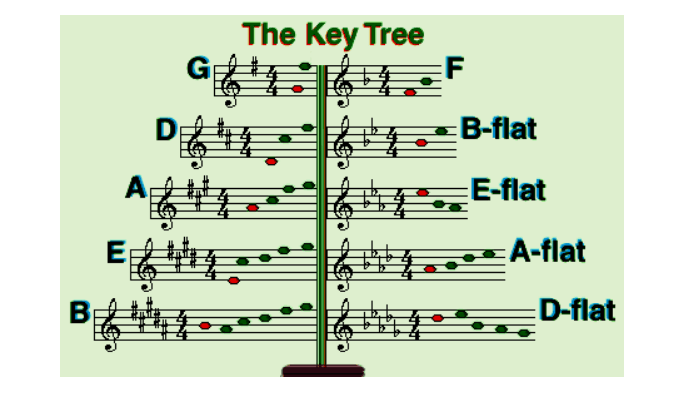

Lesson 2 - Section 1

Using Key Signatures
Imagine that you are the composer of a song. And, you would like to base your song on the B scale. That means that B is going to be the root. Since the song is based on the B scale, the song is said to be in the Key of B.
Lesson 2 - Section 2

Memorize the Key Signatures
There are many tips for figuring out what key a song is in. However, in 40 years, I’ve never seen a professional musician in any genre use any of these so called tips. The only people I’ve seen use these tips are the Intro-to-music teachers.
Lesson 2 - Section 3

The Key Tree
In the image for this section is a graphic representation of what you saw on the previous page. It would be a good idea to bookmark this key page. The root for each key is RED. The sharp(s) or flat(s) are GREEN.